The 2,300-year-old Wawona Tunnel Tree in Yosemite National Park
In 1881, two men, the Scribner brothers, were paid $75 ($1,664 in 2016) for the job of cutting a tunnel through the tree to enlarge an existing fire scar.
The tree had a slight lean to it, which increased when the tunnel was finished.
The man-made tunnel was hugely popular as a tourist attraction, and many tourists and families were photographed going through it or standing in it.
Construction of the tunnel through the Wawona Tree was part of an effort by the Park Service to help increase tourism with the age of the automobile.
The first Director of the National Park Service, Stephen Mather, was the main supporter of building up the tourist clientele for the parks, which would help bring appropriations from Congress and help establish the Park Service as a legitimate and noteworthy bureaucratic agency.
Director Mather and his chief aid, Horace Albright, both worked tirelessly to make the parks as accessible as possible and with the drive-through attractions such as the Tunnel Tree, they were very memorable as well.
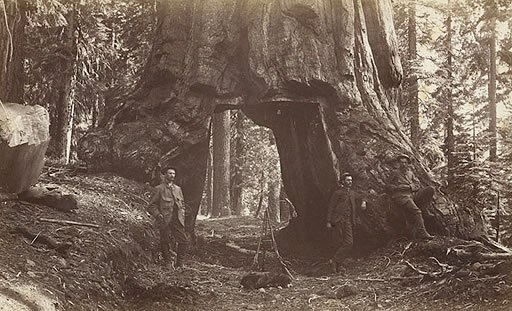 The Wawona Tunnel Tree, ca. 1880s Photo Credit
The Wawona Tunnel Tree, ca. 1880s Photo Credit
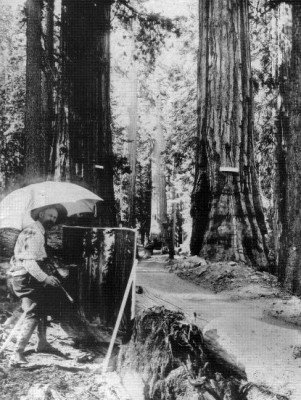 Norwegian-American artist Chris Jorgensen painting the tree, 1894 Photo Credit
Norwegian-American artist Chris Jorgensen painting the tree, 1894 Photo Credit
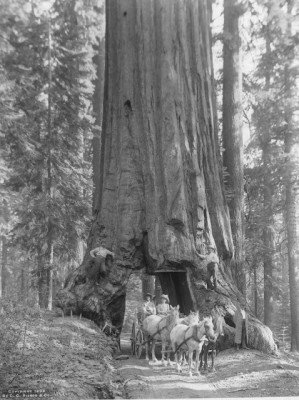 Horse-drawn wagon driving through the Wawona Tunnel Tree, 1902 Photo Credit
Horse-drawn wagon driving through the Wawona Tunnel Tree, 1902 Photo Credit
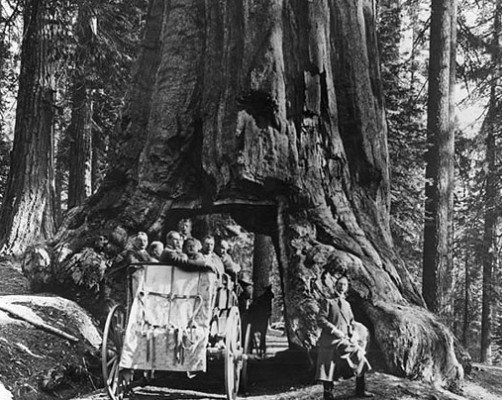 President Theodore Roosevelt is in this group visiting, 1903 Photo Credit
President Theodore Roosevelt is in this group visiting, 1903 Photo Credit
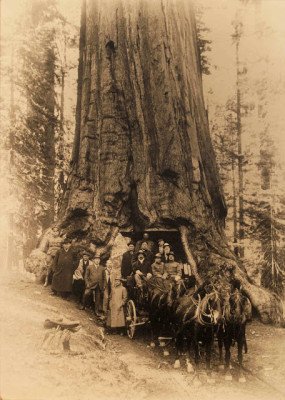 Theodore Roosevelt and John Muir at Yosemite’s Wawona Tunnel Tree, 1903 Photo Credit
Theodore Roosevelt and John Muir at Yosemite’s Wawona Tunnel Tree, 1903 Photo Credit
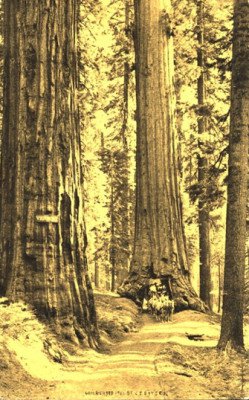 The Wawona Tunnel Tree, 1903 Photo Credit
The Wawona Tunnel Tree, 1903 Photo Credit
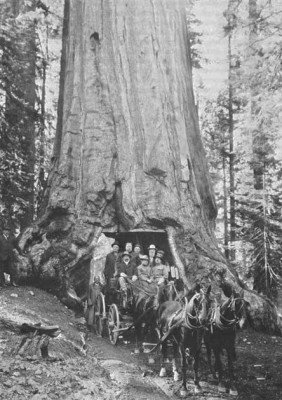 President William Howard Taft (hat off in carriage) visited the Wawona Tunnel Tree, 1909 Photo Credit
President William Howard Taft (hat off in carriage) visited the Wawona Tunnel Tree, 1909 Photo Credit
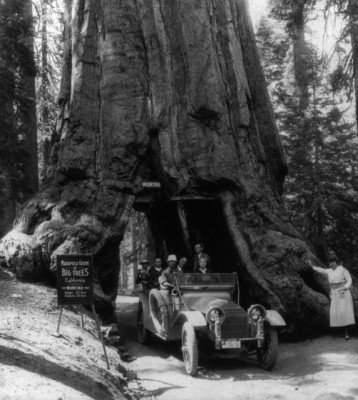 The Wawona Tunnel Tree, 1918 Photo Credit
The Wawona Tunnel Tree, 1918 Photo Credit
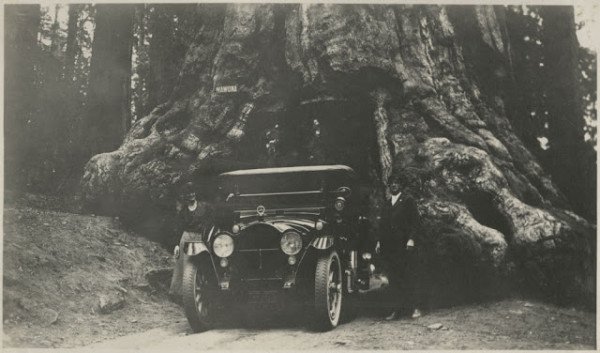 The Wawona Tree, 1921 Photo Credit
The Wawona Tree, 1921 Photo Credit
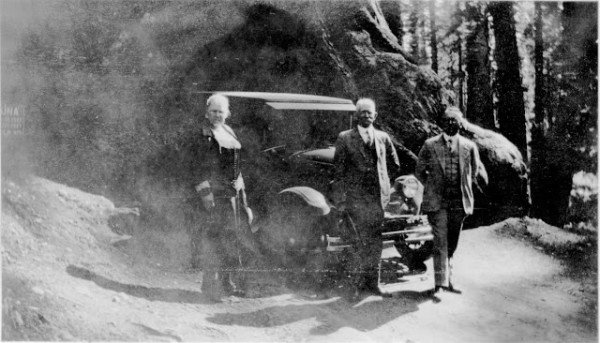 The Wawona Tree, ca. 1920s Photo Credit
The Wawona Tree, ca. 1920s Photo Credit
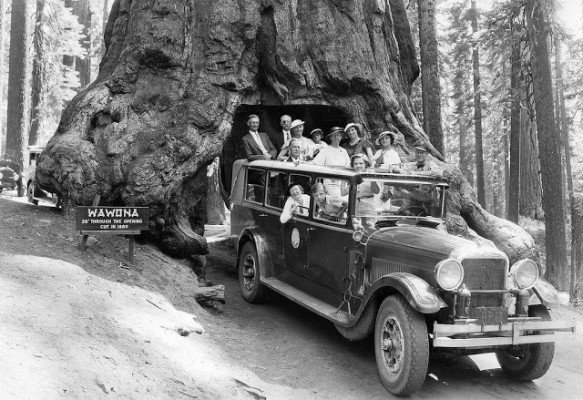 Passing through the Wawona Tree’s tunnel, ca. 1930s Photo Credit
Passing through the Wawona Tree’s tunnel, ca. 1930s Photo Credit
Both Mather and Albright had worked on the “See America First” campaign, trying to make a connection with western railroads to help increase visitation to the parks across the U.S.
The Park Service in the 1920s actively promoted automobile tourism. Yellowstone, the Grand Canyon, and Yosemite all saw roads and roadside attractions rise and prosper.
They believed roads would also increase accessibility for “those who are not as strong and agile as you and I, for they too are entitled to their inspiration and enjoyment,” as Albright stated in a 1931 letter about roads in the Smokies.
Around this same time frame, the phrase “scenic drive” was introduced into the national vocabulary.
The 1946 children’s book, Big Tree, by Mary and Conrad Buff, may have used the Wawona Tree for inspiration.
Under a heavy load of snow on its crown, the Wawona Tree collapsed in 1969.
The giant sequoia was estimated to have been 2,300 years old.
When the giant tree fell, there was a huge debate about what to do with it.
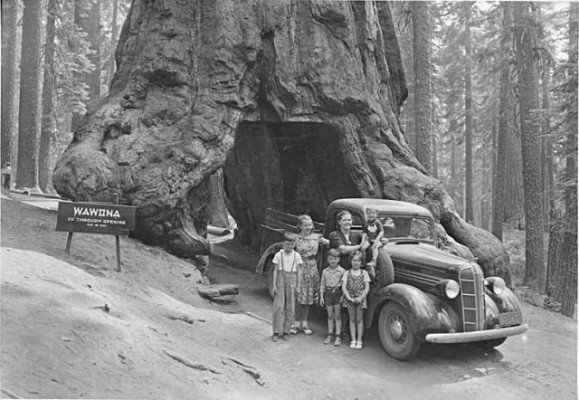 The Wawona Tunnel Tree, 1946 Photo Credit
The Wawona Tunnel Tree, 1946 Photo Credit
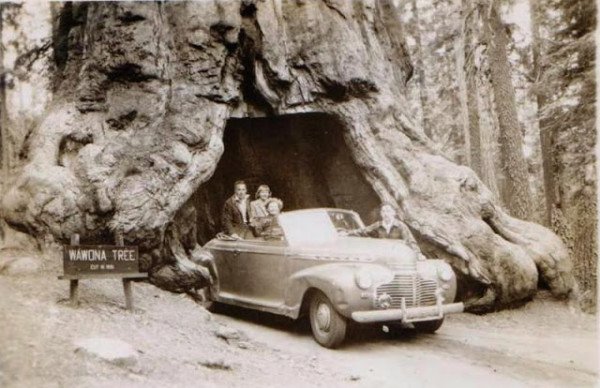 The Wawona Tunnel Tree, 1946 Photo Credit
The Wawona Tunnel Tree, 1946 Photo Credit
 A group of servicemen, 1943 Photo Credit
A group of servicemen, 1943 Photo Credit
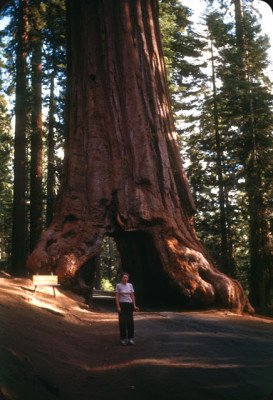 The Wawona Tree’s tunnel, 1949 Photo Credit
The Wawona Tree’s tunnel, 1949 Photo Credit
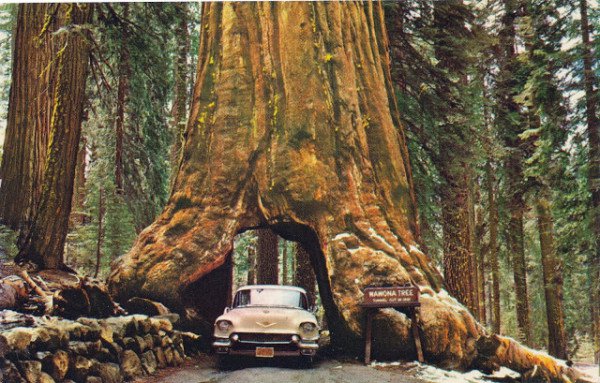 The Wawona Tree, ca. 1950s Photo Credit
The Wawona Tree, ca. 1950s Photo Credit
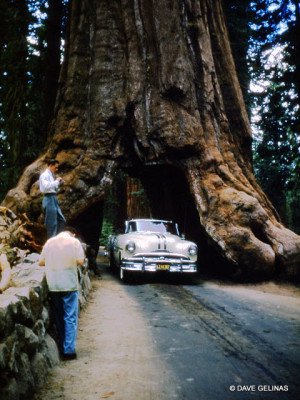 The Wawona Tree, July 4, 1954 Photo Credit
The Wawona Tree, July 4, 1954 Photo Credit
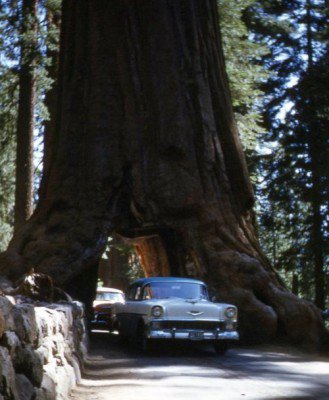 The Wawona Tunnel Tree, 1956 Photo Credit
The Wawona Tunnel Tree, 1956 Photo Credit
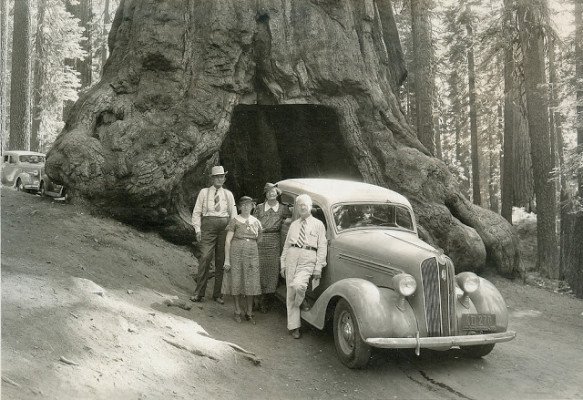 The Wawona Tree’s tunnel, September, 1962 Photo Credit
The Wawona Tree’s tunnel, September, 1962 Photo Credit
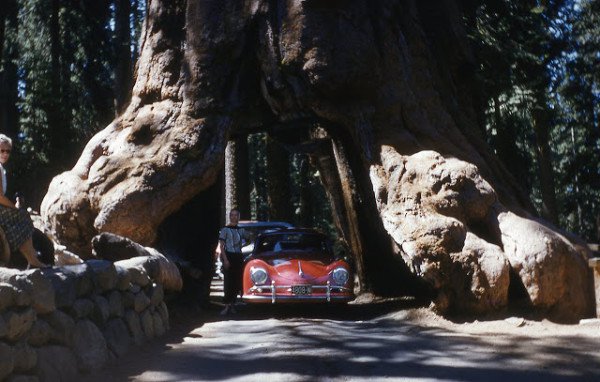 The Wawona Tunnel Tree, 1962 Photo Credit
The Wawona Tunnel Tree, 1962 Photo Credit
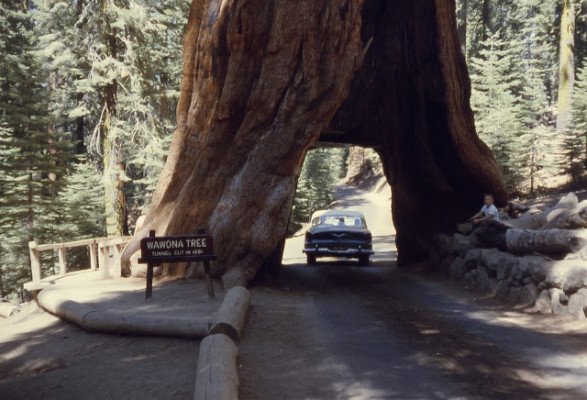 The Wawona Tunnel Tree, 1962 Photo Credit
The Wawona Tunnel Tree, 1962 Photo Credit
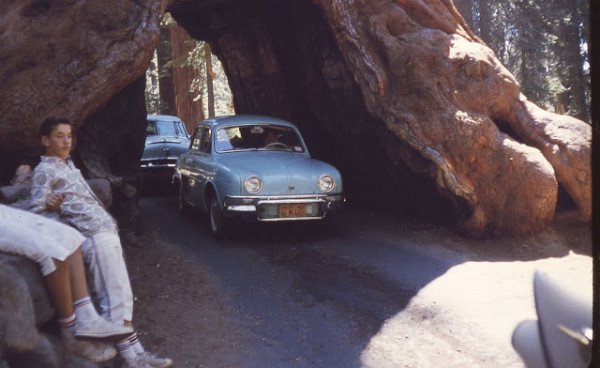 The Wawona Tunnel Tree, September 1962 Photo Credit
The Wawona Tunnel Tree, September 1962 Photo Credit
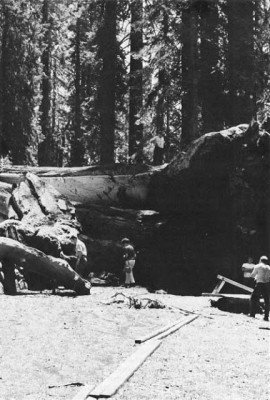 The remains of the Wawona Tunnel Tree following its collapse, 1969 Photo Credit
The remains of the Wawona Tunnel Tree following its collapse, 1969 Photo Credit
They ended up leaving it where it went down merely for ecological reasons, but it still serves as a popular tourist attraction.
Due to their size, giant sequoias can create vast ecosystems when they fall, providing habitat for animals, insects and allowing new plant growth. It is now known as the Fallen Tree Tunnel.
When people go to Sequoia National Park they sometimes they confuse Yosemite’s Fallen Tunnel Tree with Sequoia National Park’s Tunnel Log. A modest spot of both the Wawona Tree and another tunnel tree appears in the May 28th, 1899 issue of a Sacramento Daily Union article: “In the lower grove there is another tree through which the wagon road runs. It is named California and is twenty-one feet in diameter at the base and 248 feet in height.”





